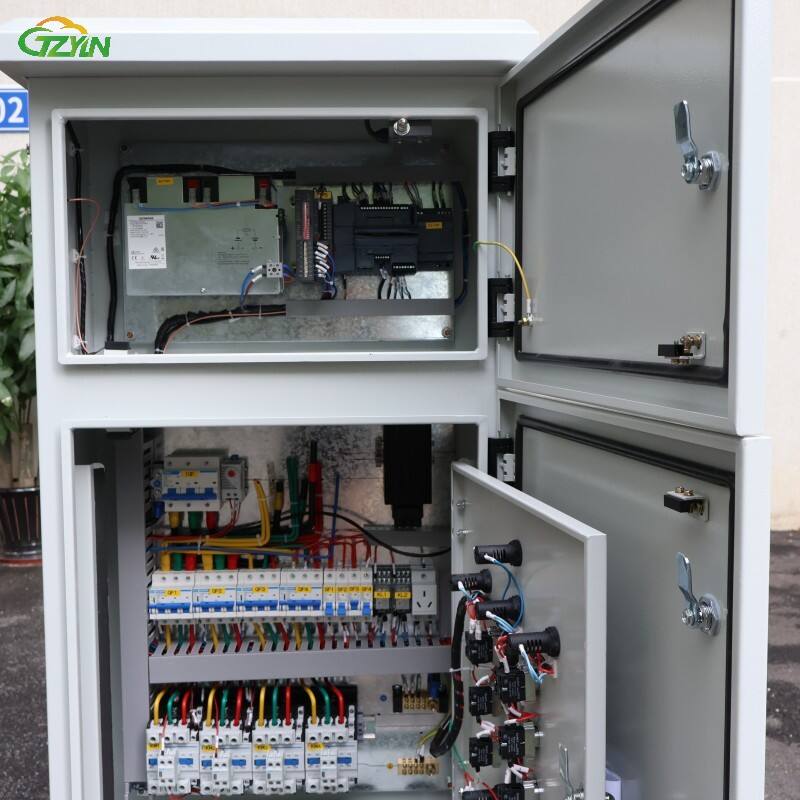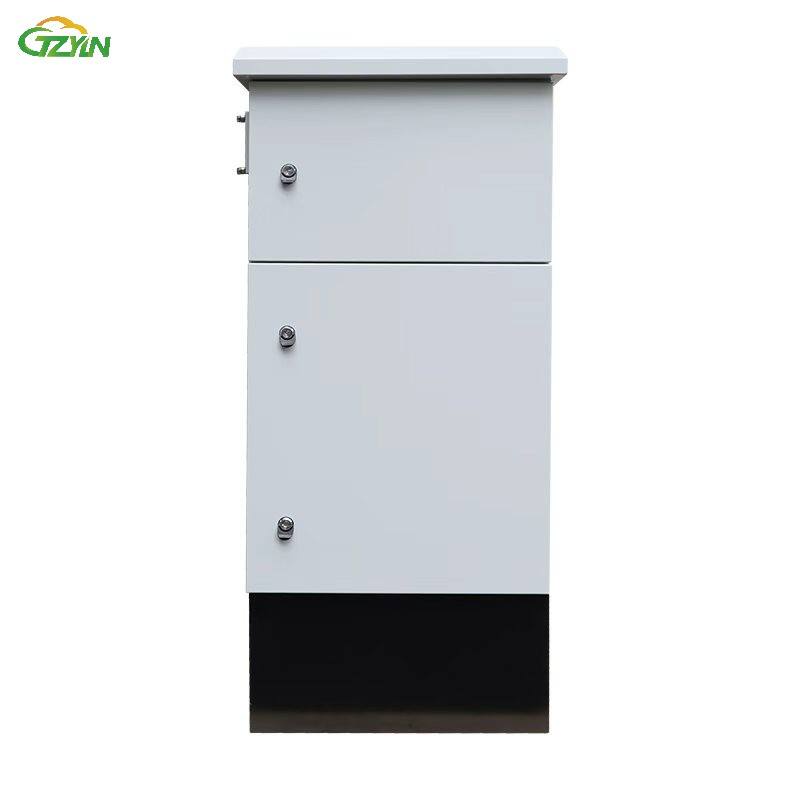আধুনিক স্ট্রিট লাইটিং অবকাঠামোর জন্য অপরিহার্য বিবেচনা
সড়কের আলোকসজ্জার অবকাঠামোর সম্প্রতি উল্লেখযোগ্য অগ্রগতি হয়েছে, যেখানে বাহিরের নিয়ন্ত্রণ আলমারি কার্যকর এবং নির্ভরযোগ্য পরিচালনা নিশ্চিত করতে গুরুত্বপূর্ণ ভূমিকা পালন করছে। বিশ্বব্যাপী শহরগুলি যেহেতু স্মার্ট প্রযুক্তি এবং টেকসই সমাধানগুলি গ্রহণ করছে, তাই সফল সড়ক আলোকসজ্জা বাস্তবায়নের জন্য সঠিক নিয়ন্ত্রণ ক্যাবিনেট নির্বাচন ক্রমশ আরও গুরুত্বপূর্ণ হয়ে উঠছে। 2025 এবং তার পরের জন্য বাইরের নিয়ন্ত্রণ ক্যাবিনেট নির্বাচনের ক্ষেত্রে প্রধান ফ্যাক্টরগুলি, সামপ্রতিক উদ্ভাবন এবং সেরা অনুশীলনগুলি নিয়ে এই বিস্তৃত গাইডটি আলোচনা করে।
মূল উপাদান এবং প্রযুক্তিগত স্পেসিফিকেশন
উপাদানের গঠন এবং দৃঢ়তার মান
যেকোনো নির্ভরযোগ্য আউটডোর কন্ট্রোল ক্যাবিনেটের ভিত্তি হল এর নির্মাণ উপকরণ এবং গুণগত মান। আধুনিক ক্যাবিনেটগুলিতে সাধারণত উচ্চমানের স্টেইনলেস স্টিল বা অ্যালুমিনিয়ামের ব্যবহার হয়, যা পরিবেশগত কারণগুলির বিরুদ্ধে উন্নত প্রতিরোধ ক্ষমতা প্রদান করে। স্থানীয় জলবায়ু অবস্থার দিকে লক্ষ্য রেখে উপকরণের পছন্দ করা আবশ্যিক, বিশেষ করে সমুদ্র উপকূলের এলাকাগুলির ক্ষেত্রে যেখানে লবণাক্ত বাতাসের কারণে ক্ষয়ক্ষতির ঝুঁকি আরও বেশি।
শিল্পমান এখন আউটডোর কন্ট্রোল ক্যাবিনেটের জন্য IP66 বা তার বেশি সুরক্ষা রেটিং দাবি করে, যা ধুলো প্রবেশ এবং শক্তিশালী জল প্রবাহের বিরুদ্ধে সম্পূর্ণ সুরক্ষা নিশ্চিত করে। ক্যাবিনেটের কাঠামোগত অখণ্ডতা চরম তাপমাত্রা, উচ্চ আর্দ্রতা এবং সম্ভাব্য আঘাতজনিত ক্ষতি সহ্য করতে সক্ষম হতে হবে, আভ্যন্তরীণ উপাদানগুলির নিরাপত্তা বজায় রেখে।
উন্নত প্রোটেকশন ফিচারস
আধুনিক আউটডোর নিয়ন্ত্রণ ক্যাবিনেটগুলিতে মৌলিক আবহাওয়া প্রতিরোধের চেয়ে উন্নত সুরক্ষা ব্যবস্থা অন্তর্ভুক্ত করা হয়। এতে তাপ ব্যবস্থাপনা ব্যবস্থা, ঘনীভবন প্রতিরোধ এবং উন্নত তালা ব্যবস্থা অন্তর্ভুক্ত রয়েছে। ভেন্টিলেশন ডিজাইনের জন্য পরিবেশগত ঝুঁকি থেকে রক্ষা করার পাশাপাশি যথেষ্ট বায়ুপ্রবাহ নিশ্চিত করা আবশ্যিক, যেখানে প্রায়শই ফিল্টারযুক্ত ভেন্ট এবং চাপ সমতা বাল্ভ ব্যবহার করা হয়।
সুরক্ষা বৈশিষ্ট্যগুলি এমন পর্যায়ে এসে পৌঁছেছে যেখানে মাল্টি-পয়েন্ট লকিং সিস্টেম, দাঙ্গাপ্রবণ সরঞ্জাম এবং ঐচ্ছিক ইলেকট্রনিক অ্যাক্সেস কন্ট্রোল একীভবন অন্তর্ভুক্ত রয়েছে। এই উপাদানগুলি রক্ষণাবেক্ষণ কর্মীদের জন্য শারীরিক নিরাপত্তা এবং নিরীক্ষণ ক্ষমতা উভয়ই নিশ্চিত করে।

স্মার্ট ইন্টিগ্রেশন ক্ষমতা
যোগাযোগ প্রোটোকল সমর্থন
স্মার্ট সিটি প্রচেষ্টাকে সমর্থন করার জন্য আধুনিক বহিরঙ্গন নিয়ন্ত্রণ ক্যাবিনেটগুলিকে বিভিন্ন যোগাযোগ প্রোটোকল অন্তর্ভুক্ত করতে হবে। এতে সেলুলার মডেম, ফাইবার অপটিক সংযোগ এবং ওয়্যারলেস মেশ নেটওয়ার্ক উপাদানগুলির ব্যবস্থা অন্তর্ভুক্ত রয়েছে। ক্যাবিনেটের ডিজাইনে যোগাযোগ সরঞ্জামগুলির সহজ ইনস্টলেশন এবং রক্ষণাবেক্ষণের ব্যবস্থা থাকা উচিত, যখন শক্তি উপাদানগুলি থেকে উপযুক্ত পৃথকীকরণ বজায় রাখা হয়।
ভবিষ্যতের জন্য প্রস্তুতির বিষয়গুলির মধ্যে রয়েছে সম্প্রসারণযোগ্য যোগাযোগ বে, এবং মডিউলার ডিজাইন পদ্ধতি যা প্রযুক্তির মানের পরিবর্তনের সাথে খাপ খাইয়ে নিতে পারে। এই নমনীয়তা নিশ্চিত করে যে স্মার্ট সিটি অবকাঠামো বিকশিত হওয়ার সাথে সাথে নিয়ন্ত্রণ ক্যাবিনেট কার্যকর থাকবে।
রিমোট মনিটরিং এবং কন্ট্রোল ফিচার
অগ্রসর মনিটরিং এবং নিয়ন্ত্রণ ব্যবস্থার সাথে একীভূতকরণের ক্ষমতা প্রসারিত হয়। আধুনিক বহিরঙ্গন নিয়ন্ত্রণ ক্যাবিনেটগুলিতে স্মার্ট কন্ট্রোলার, সেন্সর এবং মনিটরিং সরঞ্জামগুলির জন্য নির্দিষ্ট স্থান রয়েছে। এই উপাদানগুলি রাস্তার আলোকসজ্জার কার্যকলাপ, বিদ্যুৎ খরচ ট্র্যাকিং এবং পূর্বাভাসমূলক রক্ষণাবেক্ষণ সূচির উপর বাস্তব-সময়ে তদারকি করতে সক্ষম করে।
স্মার্ট উপাদানগুলির কাছে সহজ প্রবেশাধিকার নিশ্চিত করার পাশাপাশি লো-ভোল্টেজ নিয়ন্ত্রণ সার্কিট এবং প্রধান বিদ্যুৎ বিতরণের মধ্যে উপযুক্ত পৃথকীকরণ বজায় রাখতে হবে ক্যাবিনেটের অভ্যন্তরীণ বিন্যাস। এই ধরনের সংগঠন রক্ষণাবেক্ষণ পদ্ধতিকে সরল করে এবং পরিচালনা সংক্রান্ত সমস্যার ঝুঁকি কমায়।
বিদ্যুৎ ব্যবস্থাপনা এবং বিতরণ
সার্কিট সুরক্ষা এবং বিদ্যুৎ গুণমান
শক্তিশালী সার্কিট সুরক্ষা ব্যবস্থা থেকে কার্যকর বিদ্যুৎ ব্যবস্থাপনা শুরু হয়। আধুনিক বহিরঙ্গন নিয়ন্ত্রণ ক্যাবিনেটগুলি উন্নত সার্কিট ব্রেকার, সার্জ প্রোটেকশন ডিভাইস এবং বিদ্যুৎ গুণমান নিরীক্ষণ সরঞ্জাম অন্তর্ভুক্ত করে। এই উপাদানগুলি আলোকসজ্জা অবকাঠামো এবং নিয়ন্ত্রণ ব্যবস্থা উভয়কেই বৈদ্যুতিক ত্রুটি থেকে রক্ষা করে।
বর্তমান চাহিদা এবং ভবিষ্যতের সম্প্রসারণের সম্ভাবনা উভয় ক্ষেত্রেই মাথায় রেখে বিদ্যুৎ বিতরণ নকশা করা আবশ্যিক। এতে যথাযথ আকারের বাসবার, টার্মিনাল ব্লক এবং ওয়্যারিং চ্যানেল অন্তর্ভুক্ত থাকে যা আলোকসজ্জা নেটওয়ার্কের সম্প্রসারণের সাথে সাথে অতিরিক্ত সার্কিট গ্রহণ করতে পারে।
শক্তি কার্যকারিতা বৈশিষ্ট্য
আধুনিক নিয়ন্ত্রণ ক্যাবিনেটগুলিতে শক্তি ব্যবস্থাপনার ক্ষমতা ক্রমাগত জটিল হয়ে উঠছে। এর মধ্যে রয়েছে পাওয়ার ফ্যাক্টর সংশোধন, হারমোনিক ফিল্টারিং এবং অ্যাডাপটিভ নিয়ন্ত্রণ ব্যবস্থা যা পরিবেশগত অবস্থা এবং ব্যবহারের ধরন অনুযায়ী শক্তি খরচ অপ্টিমাইজ করে।
নবায়নযোগ্য শক্তির উৎস এবং শক্তি সঞ্চয় ব্যবস্থার সাথে একীভূতকরণের জন্য ক্যাবিনেট ডিজাইনে অতিরিক্ত বিবেচনা প্রয়োজন, যার মধ্যে চার্জিং কন্ট্রোলার এবং পাওয়ার রূপান্তর সরঞ্জামের জন্য জায়গা অন্তর্ভুক্ত রয়েছে।
রক্ষণাবেক্ষণ এবং সেবা
প্রবেশাধিকার এবং সংগঠন
সেবাযোগ্যতা শুরু হয় চিন্তাশীল ক্যাবিনেট লেআউট এবং সংগঠন দিয়ে। আধুনিক ডিজাইনগুলিতে মডিউলার উপাদান সজ্জা, স্পষ্ট লেবেলিং ব্যবস্থা এবং নির্দিষ্ট ডকুমেন্টেশন সংরক্ষণ রয়েছে। রক্ষণাবেক্ষণকারী কর্মীদের জন্য প্রবেশের সুযোগ রাখা প্রয়োজন, যখন নিরাপত্তা এবং পরিবেশগত সুরক্ষা বজায় রাখা হয়।
বাইরের নিয়ন্ত্রণ ক্যাবিনেটের মধ্যে কেবল ব্যবস্থাপনা ব্যবস্থা উপাদানগুলির সহজ চিহ্নিতকরণ এবং প্রতিস্থাপনের সুবিধা প্রদান করবে। এতে শক্তি এবং নিয়ন্ত্রণ ওয়্যারিং-এর উপযুক্ত পৃথকীকরণ এবং ভবিষ্যতের পরিবর্তন বা আপগ্রেডের জন্য যথেষ্ট জায়গা অন্তর্ভুক্ত থাকবে।
প্রতিরোধমূলক রক্ষণাবেক্ষণ বৈশিষ্ট্য
অন্তর্নির্মিত রক্ষণাবেক্ষণ বৈশিষ্ট্যগুলি সরঞ্জামের আয়ু বাড়াতে এবং পরিচালন খরচ কমাতে সাহায্য করে। এতে অন্তর্বর্তী আলো, রক্ষণাবেক্ষণ সরঞ্জামের জন্য সুবিধাজনক আউটলেট এবং রোগ নির্ণয়ের জন্য অ্যাক্সেস পয়েন্ট অন্তর্ভুক্ত থাকে। কিছু উন্নত ক্যাবিনেট এখন ডিজিটাল ডকুমেন্টেশন এবং রক্ষণাবেক্ষণের ইতিহাসের সাথে সংযুক্ত করার জন্য QR কোড বা RFID ট্যাগ অন্তর্ভুক্ত করে।
থার্মোস্ট্যাটিকভাবে নিয়ন্ত্রিত হিটার এবং ফ্যানের মতো পরিবেশগত নিয়ন্ত্রণ ব্যবস্থা উপাদানের ক্ষয় রোধ করে এবং সেবা পরবর্তী সময়কাল বাড়িয়ে তোলে। এই ব্যবস্থাগুলির নিয়মিত পর্যবেক্ষণ অনুকূল কর্মক্ষমতা এবং দীর্ঘায়ু নিশ্চিত করে।
প্রায়শই জিজ্ঞাসিত প্রশ্নাবলী
আধুনিক বাইরের নিয়ন্ত্রণ ক্যাবিনেটের প্রত্যাশিত আয়ু কত?
সঠিকভাবে নির্দিষ্ট এবং রক্ষণাবেক্ষণ করা আউটডোর নিয়ন্ত্রণ ক্যাবিনেটের সার্ভিস লাইফ সাধারণত 15-20 বছর। তবে পরিবেশগত অবস্থা, ব্যবহারের ধরন এবং রক্ষণাবেক্ষণ পদ্ধতির উপর নির্ভর করে এটি উল্লেখযোগ্যভাবে পরিবর্তিত হতে পারে। নিয়মিত পরিদর্শন এবং প্রতিরোধমূলক রক্ষণাবেক্ষণ এই আয়ু উল্লেখযোগ্যভাবে বাড়িয়ে তুলতে পারে।
স্মার্ট সিটি একীভূতকরণের জন্য আউটডোর নিয়ন্ত্রণ ক্যাবিনেটগুলি কীভাবে আপগ্রেড করা যায়?
যোগাযোগ মডিউল, স্মার্ট কন্ট্রোলার এবং সেন্সর যোগ করে আধুনিক নিয়ন্ত্রণ ক্যাবিনেটগুলি আপগ্রেড করা যেতে পারে। এতে সাধারণত নতুন মাউন্টিং রেল, পাওয়ার সাপ্লাই এবং যোগাযোগ গেটওয়ে ইনস্টল করা জড়িত থাকে, পাশাপাশি বিদ্যমান পাওয়ার ডিস্ট্রিবিউশন উপাদান এবং নতুন নিয়ন্ত্রণ ব্যবস্থার মধ্যে উপযুক্ত পৃথকীকরণ নিশ্চিত করা হয়।
আউটডোর নিয়ন্ত্রণ ক্যাবিনেটের জন্য প্রধান রক্ষণাবেক্ষণের প্রয়োজনীয়তাগুলি কী কী?
প্রাথমিক রক্ষণাবেক্ষণের মধ্যে নিয়মিত সীল এবং গাস্কেটের পরীক্ষা, ভেন্টিলেশন ব্যবস্থা পরীক্ষা, ফিল্টার পরিষ্কার বা প্রতিস্থাপন, তাপ নিয়ন্ত্রণ ও শীতলীকরণ ব্যবস্থার সঠিক কার্যকারিতা যাচাই এবং সমস্ত সুরক্ষা যন্ত্র পরীক্ষা অন্তর্ভুক্ত। এছাড়াও, নিয়মিত তাপীয় ইমেজিং-এর মাধ্যমে ব্যর্থতার আগেই সম্ভাব্য সমস্যাগুলি শনাক্ত করা যেতে পারে।


